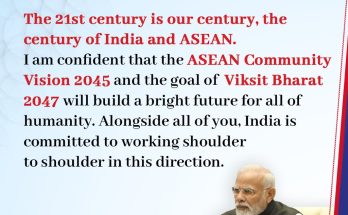 Heavy torrential rains in the past few days in southern India’s largest metropolitan city Chennai have brought the vibrant city to a standstill. The rains are said to be the heaviest in the last century. The Indian Army has been deployed for round-the-clock rescue and relief operations. As the Indian Meteorological Department forecast more rains over the next three days, leading Indian environment experts attending the Paris climate change summit have speculated that the crisis is the ‘full-blown impact’ of global warming.
Heavy torrential rains in the past few days in southern India’s largest metropolitan city Chennai have brought the vibrant city to a standstill. The rains are said to be the heaviest in the last century. The Indian Army has been deployed for round-the-clock rescue and relief operations. As the Indian Meteorological Department forecast more rains over the next three days, leading Indian environment experts attending the Paris climate change summit have speculated that the crisis is the ‘full-blown impact’ of global warming.
Prime Minister Narendra Modi is in Chennai to assess the situation and chart the way ahead. “Leaving for Chennai to take stock of the situation arising due to the devastating floods,” Mr Modi tweeted before starting for Chennai.
Assessing the impact of climate change, the experts have said it cannot be ruled out as the scale of the devastation has been massive. Hundreds of people have died and many have been displaced from their homes. “We are now experiencing the full blown impacts of climate change. The extreme rainfalls that Chennai is experiencing is a direct outcome of our ever warming planet,” said Chandra Bhushan, Deputy Director General of Delhi-based Centre for Science and Environment (CSE).
Heavy rains have flooded several parts of Chennai and its suburbs along with Puducherry, which has completely disrupted normal life. Army and disaster management forces are working on the ground in Chennai to undertake rescue on a war-footing. Having broken a 100-year-old record with one day’s rainfall covering a month’s average, the rains led to flooding major areas in the city as nearby lakes overflowed into the city.
Some reports also cited the rapid growth Chennai has witnessed in the last 15 years due to the tech and manufacturing boom at the cost of environment as a major reason. With more concrete buildings being constructed and huge number of trees being cut in the city, there is not much room for water to be absorbed which has led to increase in flooding. Many analysts say it is more a man-made disaster and the damage could have been minimised with proper planning.
“The global average temperature has increased by less than 1 degrees. Think what will happen at 2 degree temperature increase,” Mr Bhushan said. Harjeet Singh of Action Aid India, said, “Climate change has always been a contributing factor. We cannot say that it is 100 per cent because of climate change. Here we are talking about the scale of destruction and such rains which have happened after 100 years.” “If we look at the disasters in the last five years, from Kashmir to Uttarkahand, if we see the trend, it becomes clear that it is because of climate change,” he added.
Author Profile
- India Writes Network (www.indiawrites.org) is an emerging think tank and a media-publishing company focused on international affairs & the India Story. Centre for Global India Insights is the research arm of India Writes Network. To subscribe to India and the World, write to editor@indiawrites.org. A venture of TGII Media Private Limited, a leading media, publishing and consultancy company, IWN has carved a niche for balanced and exhaustive reporting and analysis of international affairs. Eminent personalities, politicians, diplomats, authors, strategy gurus and news-makers have contributed to India Writes Network, as also “India and the World,” a magazine focused on global affairs.
Latest entries
 DiplomacyOctober 4, 2025UNGA Resolution 2758 Must Not Be Distorted, One-China Principle Brooks No Challenge
DiplomacyOctober 4, 2025UNGA Resolution 2758 Must Not Be Distorted, One-China Principle Brooks No Challenge India and the WorldJuly 26, 2025MPs, diplomats laud Operation Sindoor, call for national unity to combat Pakistan-sponsored terror
India and the WorldJuly 26, 2025MPs, diplomats laud Operation Sindoor, call for national unity to combat Pakistan-sponsored terror India and the WorldJuly 25, 2025When Fire Ends, Diplomacy Begins
India and the WorldJuly 25, 2025When Fire Ends, Diplomacy Begins India and the WorldJuly 16, 2025Operation Sindoor and its Aftermath: India’s Successful Diplomatic Outreach
India and the WorldJuly 16, 2025Operation Sindoor and its Aftermath: India’s Successful Diplomatic Outreach







